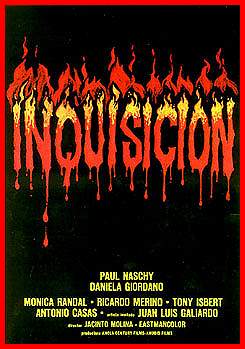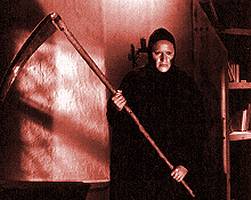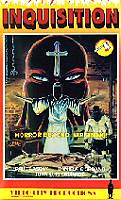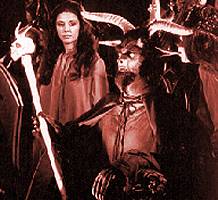|
|
| Sei in: Cinema e Medioevo ® Indice alfabetico dei film |
Inquisición
1976, regia di Jacinto Molina (Paul Naschy)

Scheda: Nazione: Spagna - Produzione: Ancla Century Films, Anubis Films - Distribuzione: Manga Films S.L., Sinister Cinema, Video City - Soggetto: Jacinto Molina - Sceneggiatura: Jacinto Molina - Fotografia: Miguel Fernández Mila - Montaggio: Soledad López - Scenografia: Gumersindo Andrés, Augusto Fenollar - Musiche: Máximo Barratas - Effetti speciali: Francisco García San José, Pablo Pérez - Formato: Color - Durata: 89'.
Cast: Jacinto Molina (Paul Naschy), Daniela Giordano, Mónica Randall, Ricardo Merino, Tony Isbert, Julia Saly, Antonio Iranzo, Juan Luis Galiardo, Eduardo Calvo, Tota Alba, E. Maria Salerno, Eva León, Loli Tovar, Jenny O'Neil, Isabel Luque, Belén Cristino, Antonio Casas.



![]() Plot Summary, Synopsis, Review:
IMDb -
entertainment.msn.com -
naschy.com:
«...Paul
Naschy's take on witch-hunting, and the period of the Inquisition that gave
witch-hunters their greatest resources and rationale, is different, however.
With his sympathies for villains made evident by the films he has scripted and
starred in, Naschy makes his witch-hunting inquisitor, Bernard de Fossey, a more
complex figure. Indeed, Naschy's inquisitor emerges a sympathetic soul toward
the end of the film, a victim of love and the machinations of a woman, a person
of stubborn dedication unimpressed by feminine charms except for the one special
woman who vanquishes his will and subverts his duty. Inquisition marked
the first time that Paul Naschy directed a film, more out of necessity than
anything else. Of course, he scripted and starred in the film as well. As usual,
Naschy spent time researching his subject matter. The story is based on a
factual occurrence in medieval France, in the region of Carcassone, where a
magistrate fell in love with a suspected witch; the lovers wound up being burned
at the stake. Naschy's research doesn't end here. As the film evolves we get an
educational primer on the witchery and witch-hunters and Satanism through the
characters' dialogue. Exposition is buttressed by dimensional authenticity...».
Plot Summary, Synopsis, Review:
IMDb -
entertainment.msn.com -
naschy.com:
«...Paul
Naschy's take on witch-hunting, and the period of the Inquisition that gave
witch-hunters their greatest resources and rationale, is different, however.
With his sympathies for villains made evident by the films he has scripted and
starred in, Naschy makes his witch-hunting inquisitor, Bernard de Fossey, a more
complex figure. Indeed, Naschy's inquisitor emerges a sympathetic soul toward
the end of the film, a victim of love and the machinations of a woman, a person
of stubborn dedication unimpressed by feminine charms except for the one special
woman who vanquishes his will and subverts his duty. Inquisition marked
the first time that Paul Naschy directed a film, more out of necessity than
anything else. Of course, he scripted and starred in the film as well. As usual,
Naschy spent time researching his subject matter. The story is based on a
factual occurrence in medieval France, in the region of Carcassone, where a
magistrate fell in love with a suspected witch; the lovers wound up being burned
at the stake. Naschy's research doesn't end here. As the film evolves we get an
educational primer on the witchery and witch-hunters and Satanism through the
characters' dialogue. Exposition is buttressed by dimensional authenticity...».